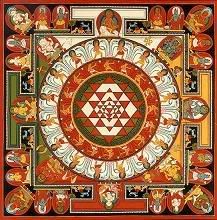I have compiled some very interesting information on VIMANAS….
All intelligent thoughts have already been thought; what is necessary is only to try to think of them again. Im so proud to be part of this great civilization…..
"The pilot is one who knows the secrets"
Bodhaanada: Scientists say that there are 32 secrets of the working of the Vimaana. A pilot should acquaint himself thoroughly with them before he can be deemed competent to handle the aeroplane. He must know the structure of the aeroplane, know the means of its take off and ascent to the sky, know how to drive it and how to halt it when necessary, how to maneuver it and make it perform spectacular feats in the sky without crashing. Those secrets are given in "Rahashya Lahari" and other works by Lalla and other masters, are are described thus:
"The pilot should have had training in maantrica and taantrica, kritaka and antaraalaka, goodha or hidden, drishya and adrishya or seen and unseen, paroksha and aparoksha, contraction and expansion, changing shape, look frightening, look pleasing, become luminous or enveloped in darkness, deluge or pralaya, vimukha, taara, stun by thunderstorm din, jump, move zig-zag like serpent, chaapala, face all sides, hear distant sounds, take pictures, know enemy maneuver, know direction of enemy approach, stabdhaka or paralyse, and karshana or exercise magnetic pull.
According to the Vymankia Shastra, purportedly written by Maharishi Bharadwaja in the 4th Century BC, these are some of the secrets to piloting a vimana. They include:
Maantrika: The invoking of mantras which will permit one to achieve certain spiritual and hypnotic powers so that he can construct airplanes which cannot be destroyed.
Taantrika: by acquiring some of the Tantric powers, one may endow his aircraft with those same powers.
Goodha: This secret permits the pilot to make his vimana invisible to his enemies. Adrishya accomplishes the same purpose by attracting 'the force of the ethereal flow in the sky.
Paroksha: This helpful hint enables the pilot to paralyze other vimanas and put them out of action.
Aparoksha: One may employ this ability to project a beam of light in front of his craft to light his way.
Viroopa Karana: With this skill mastered, the pilot can produce 'the thirty-second kind of smoke', charge it with 'the light of the heat waves in the sky' and transform his craft into a 'very fierce and terrifying shape' guaranteed to cause 'utter fright to onlookers'.
Roopaanara can cause the vimana to assume such shapes as those of the lion, tiger, rhinoceros, and serpent - even a mountain- to confuse observers.
Suroopa: If one can attract the thirteen kinds of 'Karaka force', one can make the vimana appear to be 'a heavenly damsel bedecked with flowers and jewels'.
Pralaya: This deadly secret pushed electrical force through the 'five-limbed aerial tube' so that the pilot may 'destroy everything as in a cataclysm'.
Vimukna sends a poison powder through the air to produce 'wholesale insensibility and coma'.
Taara: This ability, once mastered, provides the pilot with another means of avoiding contact with an enemy or hiding his purpose from observers: 'By mixing with ethereal force 10 parts of air force, 7 parts of water force, and 16 parts of solar glow, and projecting it by means of the star-faced mirror through the frontal tube of the vimana, the appearance of a star-spangled sky is created.'
Saarpa-Gamana: This secret enables the pilot to attract the forces of air, join them with solar ryas, and pass the mixture through the center of the craft so the vimana will 'have a zig-zagging motion like a serpent'.
Roopaakarshana permits the pilot to see inside an enemy's airplane, while Kriyaagrahana allows one to spy on 'all the activities going on down below on the ground'.
Jalada roopa instructs the pilot in the correct proportions of certain chemicals which will envelop the vimana and give it the appearance of a cloud."
Aavartaas or aerial whirlpools are innumerable in the above regions. Of them the whirlpools in the routes of the vimanas are five.
In the Rekhapathha there occurs the whirlpool of winds. In Kakshya-pathha there occurs Kiranavarta or whirlpool from solar rays. In Shaktipathha there occurs Shytyaavarta or whirlpool of cold currents. And in Kendrapathha there occurs gharshanavartaor whirlpool by collision. Such whirlpools are destructive of vimanas, and have to be guarded against.
"The pilot should now these five sources of danger, and learn to steer clear of them to safety."
WHAT CAN I SAY????






